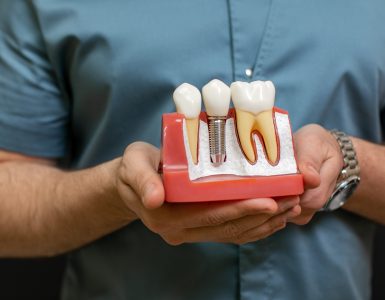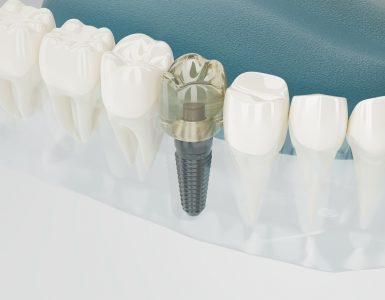You may be wondering what the procedure is to get a dental implant and exactly how it is inserted into your jaw.
What are the steps?
There are several steps your dentist will go through to complete the implant process. These stages will be completed over time to ensure proper healing, so you will need quite a few visits with your dentist.
- The first step is having x-rays and 3D images taken of your teeth and jaw. This allows your dentist to get a good idea of the health of your teeth and gums, whether you are a good candidate for the procedure, and placement of the implant. Any necessary tooth extraction will be attended to.
- If you do not have sufficient bone mass to support an implant, your dentist may suggest a bone graft. This is a procedure where bone is taken from another part of your body and transplanted into your jawbone. It will be necessary to allow time after this procedure for allow for healing.
- To insert the implant, the surgeon will cut the gum to expose the bone and will drill a hole in the bone to place the implant in. There are options to ease the pain of this process, usually by using a local anaesthetic, but your dentist will be able to advise you on the most suitable for you. A period of approximately six months is required to allow time for healing and the bone to grow into and attach to the implant. This process is called osseointegration.
- The next step is the placing of the abutment, to which the crown is attached. An abutment is the connection between the implant and the crown. The gum will need to be reopened to expose the implant. This metal abutment is screwed into the implant and the gum is closed around it. It takes a few weeks for the gum to heal before the crown is attached. Sometimes the abutment is attached at the time the implant is inserted.
- An impression or mould of your teeth and gums will be taken of the area so that your new tooth can be created with the right size, shape and colour to be a natural fit and match to your existing teeth.
- Once completed, the crown will be attached to the abutment, adjusted until it is in the perfect position and sits well with your teeth and jaw. It is then either cemented of screwed into place.
The process may take a few months before you get your new tooth, but the wait will be worth it. Blending in with your teeth, dental implants can give you a natural, long-lasting smile, as well as improving the health of your teeth and gums.




